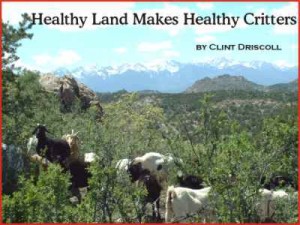Brief by Central Staff
Water – May 2004 – Colorado Central Magazine
The wet Easter storm that blanketed Colorado certainly didn’t hurt our summer water supply, but it didn’t help all that much, either. Snowpacks in general are still well below average on account of a warm March that set a record for dryness while depleting the snowpack, and much of this April snow hit the lower elevations, where it can’t be captured by high reservoirs.
It means the state is enduring its seventh straight year of below-average precipitation, and the forest-fire season got off to an early start, with an 8,900-acre blaze west of Fort Collins that began on March 30.
One of the driest basins is the one that supports the highest population: the South Platte. Buckskin Joe, at 11,150 feet near Alma, was at 64% of average on April 10. It averages 14.6 inches of water content, but had only 9.3. Nearby Hoosier Pass was at 77%. Another site, Jackwhacker Gulch in Clear Creek County, was at 80%; it is not in Central Colorado, but the temptation to use the name was impossible to resist.
The Gunnison basin sat at 77% of average. Not a single site, from McClure Pass at 50% to Red Mountain Pass at 93%, was at or above average.
The Arkansas did have one measuring site that beat the average: South Colony in Custer County, at 104%. Basin-wide, the moisture content was 82% of average.
The wettest basin was one that had been the driest in recent years, the Rio Grande. It was 88% of average, with Middle Creek (which actually drains into the Closed Basin) highest at 103%. Medano Pass had only 55% of average, though.
Daily reports of the snowpack are based on Snotel readings — a scale under a pad determines the weight of the snow, along with temperature and wind at 15-minute intervals. That information is sent at night to Portland, Ore., by a solar powered high-frequency radio transmitter whose waves bounce off meteor trails in the high atmosphere.
Those readings are augmented by monthly visits to “snow courses,” where federal employees — usually from the National Resources Conservation Services — don snowshoes and drive aluminum tubes into the snow. The snow depth is measured and the tubes are weighed to determine water content.
Throughout the West in 2003-04, measurements have been low. New Mexico anticipates that the upper Rio Grande will be 27% below normal. Ironically, rivers were running above average in March, on account of warm weather that produced early snowmelt — the snowpack usually grows in March.
Utah had similar problems as a result of that clement March. The snowpack was ahead of average at the start of the month. Then came the warm dry spell; the result was the worst March ever for lost snowpack — five times as much melt as the previous record.
Can we put some positive spin on this? Well, it maintains our regional distinctiveness. As the great historian Walter Prescott Webb wrote in 1931, the region’s “distinguishing characteristic … is a deficiency in the most essential climatic element — water…. This deficiency accounts for many of the peculiar ways of life in the West…. It is the feature that makes the whole aspect of life west of the 98th meridian such a contrast to life east of that line.”


